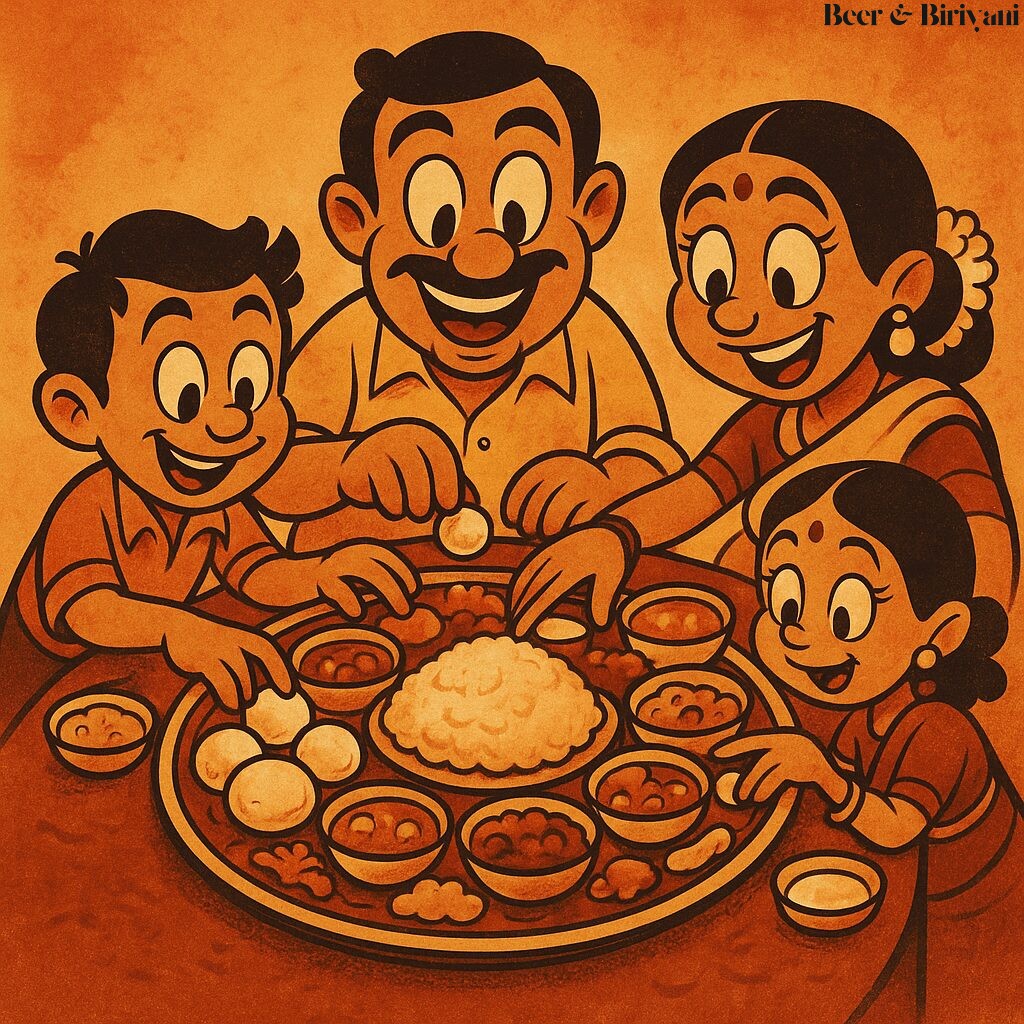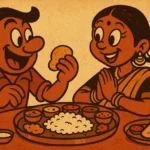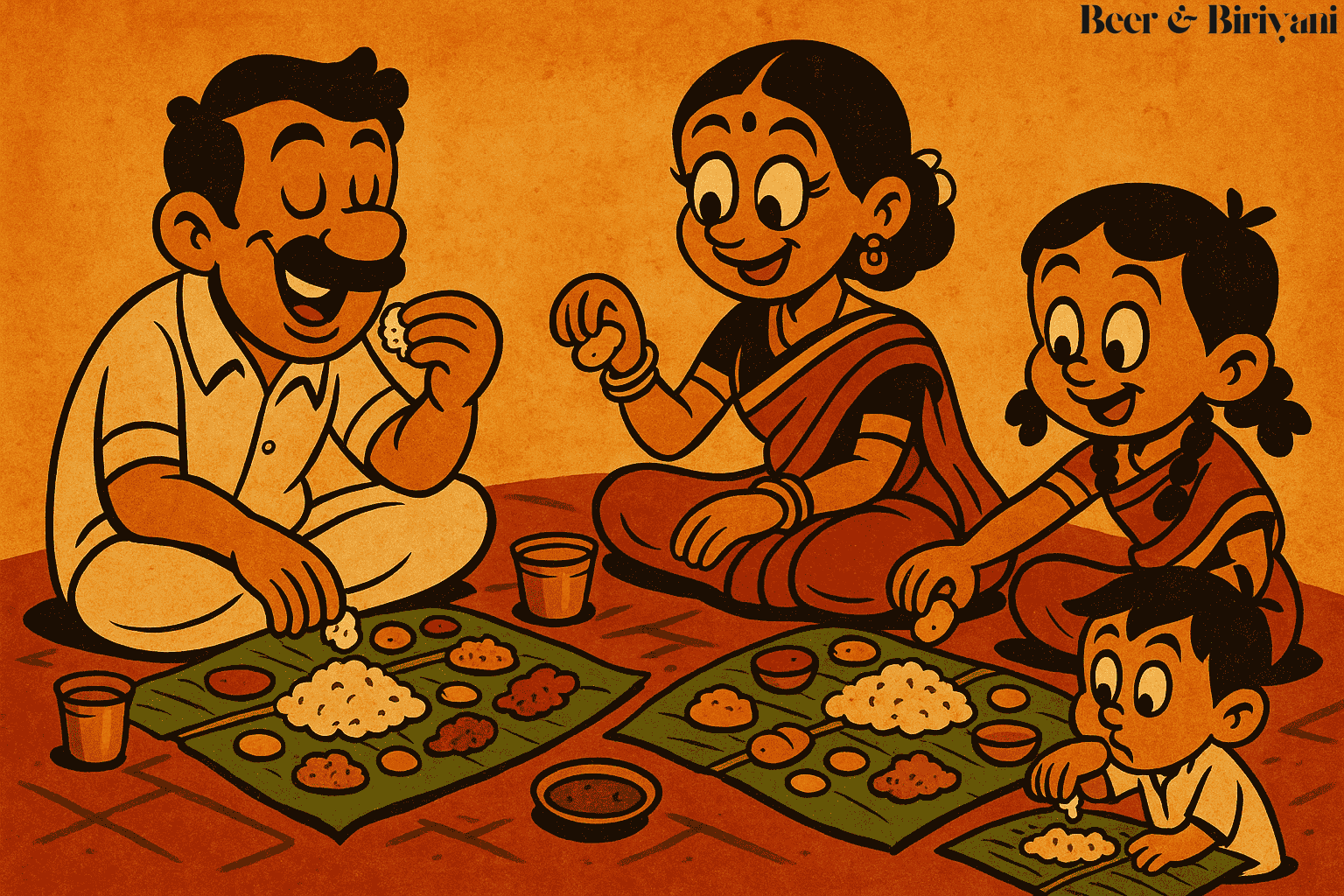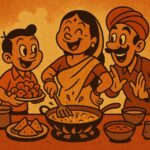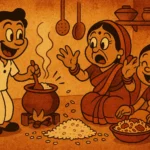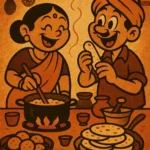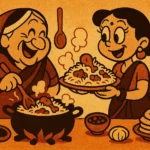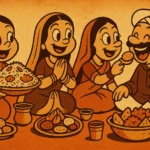I’ve never trusted plates that ask you to eat in a straight line. Appetizer, main course, dessert—each in neat sequence, like obedient students raising hands. There’s something deeply unsatisfying about being told what to eat first, second, and last. Which is probably why, when I think of a meal that feels like home, I think of the thali—circular, chaotic, generous, and unapologetically plural.
Growing up in Mumbai, Sunday lunch at my grandmother’s house was less a meal and more a planetary system. In the center: a small hill of rice. Orbiting it: katori after katori of dal, sabzi, chutney, achar, papad, raita, and sweets. There was no roadmap. No starting point. Just pick a direction and dive in. The thali didn’t ask for order. It offered options. And somewhere in that swirl of spoonfuls was a quiet philosophy: life isn’t linear—why should your meal be?
Everything, Everywhere, All at Once
The genius of the Indian thali lies in its total rejection of course structure. It doesn’t separate “starter” from “entree.” It says: eat sambar with rice now, then switch to curd rice mid-bite, sneak in a spoon of payasam, and finish with a papad for no reason at all. The meal isn’t a line with a beginning, middle, and end. It’s a circle. You eat what you want, when you want. And then go back to something you already tasted, because it’s better the second time around.
This isn’t just convenience. It’s design. A well-composed thali balances the six traditional rasas—sweet, salty, sour, bitter, spicy, and astringent. Like Ayurveda reminds us, balance isn’t achieved in a sequence. It’s simultaneous. Your body doesn’t want spice at 1 PM and sweet at 1:30. It wants both, in harmony. The thali gives you that. Without hierarchy. Without ceremony. Just pure, edible democracy.
Circles Are Kind
There’s something psychologically soothing about the shape itself. The round steel plate. The rimmed bowls. Even the chapatis—always round, always warm, always refusing to fit into a square Tupperware box. Circles feel abundant. They have no sharp corners. They invite return. When you eat from a thali, you’re not racing to finish. You’re circling back, spiraling inward, eating the way memory works—looping, layering, never quite finished.
Compare this to the Western plate model—three rigid sections, each quarantined from the other, with strict temporal rules. Appetizers first. Then mains. Dessert only at the end. It’s like the food is being disciplined. The thali, by contrast, trusts you. It says: go ahead, have a bit of ghee-drizzled dal before you touch the sabzi. Or eat your sweet now and again later. No one’s watching. No one’s judging.
Regional Rhythms, Same Circle
The structure of the thali changes across India, but the philosophy remains. In Gujarat, the thali might start with a bowl of kadhi and sweet dal, alongside undhiyu, pickles, farsan, and rotlis. In Andhra Pradesh, it’s all about spice—pappu, gutti vankaya, gongura, and enough chutneys to confuse your senses into bliss. In Kerala, the sadya takes this to the next level with up to 26 dishes served on a banana leaf, no two textures repeated, no two flavors clashing.
All of them say the same thing: food is not an assembly line. It’s a tapestry. A woven thing. And like a good story, it allows re-entry. You can come back to the beginning. You can linger at the middle. You can skip the end and still feel full.
Trying to Thali in Texas
Now that I live in Austin, my meals are often less elaborate—two dishes max, maybe a salad pretending to be a third. But on days when I feel unanchored, I build myself a thali. Some rice, a basic dal, leftover sabzi, pickle from a friend’s mom, and a blob of curd that insists on melting into everything. The moment I set it down, I feel whole again. The plate becomes a compass. Not pointing in one direction, but radiating outward, like sunlight. Or memory.
My son doesn’t quite get it yet. He eats one item at a time, in neat bites. I watch with patience. One day, I’ll teach him the joy of letting flavors mingle. Of tearing a chapati and not assigning it a job. Of letting your meal be like your thoughts—messy, circular, and satisfying in ways you can’t plan for.
More Than a Meal
The thali is not just a plate. It’s a worldview. It tells you that abundance doesn’t have to be overwhelming. That structure can come from balance, not borders. That repetition isn’t boring—it’s comforting. And that the best meals don’t move in straight lines. They loop. They spiral. They feed you in circles, just like the stories your grandmother told, just like the way you return to her recipes now, again and again.
Born in Mumbai, now stir-frying feelings in Texas. Writes about food, memory, and the messy magic in between — mostly to stay hungry, sometimes just to stay sane.

